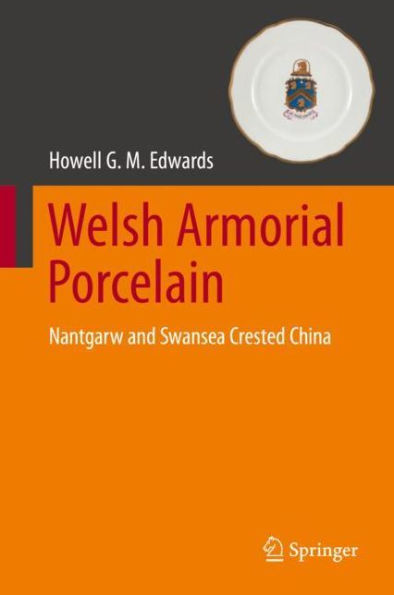Armorial porcelains comprised the output of most European ceramics factories in the 18th and 19th Centuries in response to the large quantity of armorial porcelain services that were being imported from China bearing the coats of arms and crests of aristocratic families. Whereas these armorial services have been identified and covered for most porcelain manufactories the information relevant to their production by the two relatively short-lived Nantgarw and Swansea China Works has not been addressed as a theme until now. As an integral component of the holistic forensic appraisal of porcelain, a functional and decorative artwork manifestly part of our cultural heritage and its ongoing preservation , the recording and identification of such artefacts is material for the future establishment of a database of factory production . The Nantgarw and Swansea factories only operated for a limited period in the second decade of the 19th Century and their porcelains were much appreciated for their high quality and desirability by Georgian households. Today, examples are to be found in many museums and ceramics collections and continue to excite the interest of specialists and the general public . This text provides the first comprehensive assessment of armorial porcelains from these two factories and the methodology and procedure for the identification of unknown armorial bearings and crests is illustrated; individual bearings are discussed in detail and existing incorrect assignments in the literature are re-appraised. The difficulties in attribution of armorial heraldic achievements that are only minimally depicted are considered and directions for further studies using historical documentation are invoked. This book therefore fills a currently existing gap in the ceramics literature of the 19th Century.
1140951416
Welsh Armorial Porcelain: Nantgarw and Swansea Crested China
Armorial porcelains comprised the output of most European ceramics factories in the 18th and 19th Centuries in response to the large quantity of armorial porcelain services that were being imported from China bearing the coats of arms and crests of aristocratic families. Whereas these armorial services have been identified and covered for most porcelain manufactories the information relevant to their production by the two relatively short-lived Nantgarw and Swansea China Works has not been addressed as a theme until now. As an integral component of the holistic forensic appraisal of porcelain, a functional and decorative artwork manifestly part of our cultural heritage and its ongoing preservation , the recording and identification of such artefacts is material for the future establishment of a database of factory production . The Nantgarw and Swansea factories only operated for a limited period in the second decade of the 19th Century and their porcelains were much appreciated for their high quality and desirability by Georgian households. Today, examples are to be found in many museums and ceramics collections and continue to excite the interest of specialists and the general public . This text provides the first comprehensive assessment of armorial porcelains from these two factories and the methodology and procedure for the identification of unknown armorial bearings and crests is illustrated; individual bearings are discussed in detail and existing incorrect assignments in the literature are re-appraised. The difficulties in attribution of armorial heraldic achievements that are only minimally depicted are considered and directions for further studies using historical documentation are invoked. This book therefore fills a currently existing gap in the ceramics literature of the 19th Century.
119.49
In Stock
5
1

Welsh Armorial Porcelain: Nantgarw and Swansea Crested China

Welsh Armorial Porcelain: Nantgarw and Swansea Crested China
eBook (1st ed. 2022)
$119.49
$159.00
Save 25%
Current price is $119.49, Original price is $159. You Save 25%.
Related collections and offers
119.49
In Stock

Product Details
| ISBN-13: | 9783030974398 |
|---|---|
| Publisher: | Springer-Verlag New York, LLC |
| Publication date: | 05/05/2022 |
| Sold by: | Barnes & Noble |
| Format: | eBook |
| File size: | 24 MB |
| Note: | This product may take a few minutes to download. |
About the Author
From the B&N Reads Blog
